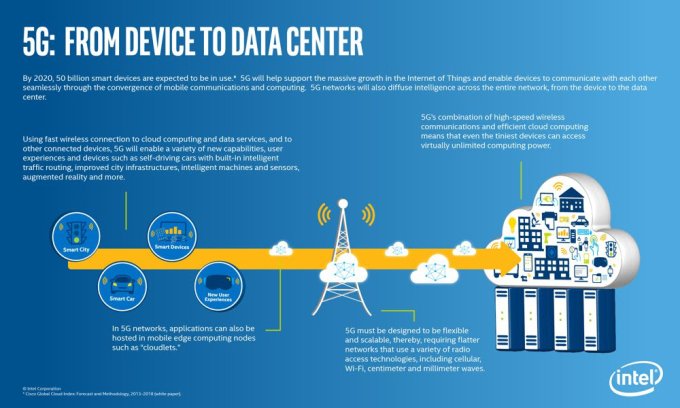INTEL
100G Silicon Photonics Transceivers Might Add 100 Gigabit/s Bandwidth Support For Future 5G Mobile Networks
Intel started it’s journey in 1968 in Mountain View, California. Since then they have become the second largest semiconductor chip maker. We primarily see Intel processors in laptops and computers, but they also make a lot of different products such as flash memory, network interface controllers and graphics chips among many others.
Intel in a blog post recently announced that they will expand their portfolio of 100G transceivers, so that they can be used in implementing 5G networks. Intel’s 100G transceivers were already being used in big data centres like Azure and AWS. They also stated that the current transceivers can withstand harsh outdoor conditions and also support optical transport to the nearest baseband unit or central office (up to 10 km).
 |
| Intel 100g Silicon Photonics |
For those who don’t know, a transceiver is actually a transmitter and a receiver coupled together along with a controller chip, mainly used in data centres. 5G networks will depend on huge bandwidth delivery over short distances, basically somewhat like our current Wi-Fi networks.
Network companies will have to make several base stations to cover a given area, far more than what 4G and 3G networks required. The Intel 100G silicon photonics transceivers can help meet the high bandwidth requirements.

Currently LTE base stations use 10G optical transceivers, and this must give you an idea on how big of a leap 5G will be. Many network companies are betting big on 5G and that it why Intel wants to jump in with their transceivers now. 5G implementation will require complete network overhauls and demand for 100G transceivers in networks will hugely outstrip the one in data centres.
Intel terms silicon photonics as the combination of two of the most important inventions of the 20th Century, the silicon integrated circuit and the semiconductor laser, which results in faster data transfer over longer distances. But aside from the marketing jargon, in silicon photonics data is transferred among computer chips by optical rays rather than electrical conductors. This results in data being carried faster.
5G will open a new era of computing, we might finally see reliable game streaming services, enhanced multimedia experience and automation in various sectors among many others.
Intel missed the mobile wave and with it a lot of business, but they probably won’t miss the 5G bus. As Intel’s ex CEO Brian Krzanich stated.
Indranil Chowdhury and mundophone

No comments:
Post a Comment